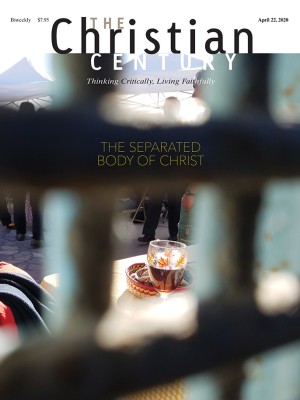A tale of two cities: why social distancing works

In 1918, the city of Philadelphia threw a parade that killed thousands of people. Ignoring warnings of influenza among soldiers preparing for World War I, the march to support the war effort drew 200,000 people who crammed together to watch the procession. Three days later, every bed in Philadelphia’s 31 hospitals was filled with sick and dying patients, infected by the Spanish flu.
By the end of the week, more than 4,500 were dead in an outbreak that would claim as many as 100 million people worldwide. By the time Philadelphia’s politicians closed down the city, it was too late.
A different story played out in St. Louis, just 900 miles away. Within two days of detecting its first cases among civilians, the city closed schools, playgrounds, libraries, courtrooms, and even churches. Work shifts were staggered, and streetcar ridership was strictly limited. Public gatherings of more than 20 people were banned.
Read our latest issue or browse back issues.
The extreme measures—now known as social distancing, which is being called for by global health agencies to mitigate the spread of the novel coronavirus—kept per capita flu-related deaths in St. Louis to less than half of those in Philadelphia, according to a 2007 paper in the Proceedings of the National Academy of Sciences.
The concept of “flattening the curve” is now a textbook public health response to epidemics, including the spread of COVID-19. Once a virus can no longer be contained, the goal is to slow its spread. Exponential growth in infections leaves health-care systems struggling to handle the surge. But with fewer people sick at once (and overall), services aren’t overwhelmed and deaths diminish. This buys time for doctors to treat the flood of patients and researchers to develop vaccines and antiviral therapies.
The key to effective social distancing, though, is timing.
“I think the critical lesson from both the modeling and the historical work is that the benefits of multiple interventions are greatest if they are introduced early (before 1 percent of the population is infected) and maintained,” said Richard Hatchett, a physician and head of the Coalition for Epidemic Preparedness Innovations in London, who coauthored the 2007 paper.
Distancing measures are less effective once more people have contracted the virus, especially in cases where the vast majority of people are not sick enough to need medical attention.
The current outbreak is just such a case. Only 19 percent of confirmed cases of COVID-19, the disease caused by the new coronavirus, become severely or critically ill, reports the CDC. Those with mild symptoms (or none at all) may easily pass the virus on to vulnerable people, particularly those who are older or have preexisting health conditions.
Social distancing doesn’t have to be draconian. South Korea adopted a modern version of the St. Louis model; the country never locked its citizens down or quarantined entire cities, but it still managed to slow the spread of the new coronavirus. New infections leveled off thanks in part to thousands of free daily tests and a coordinated government effort that closed schools, canceled public events, and supported flexible working arrangements.
“Without harming the principle of a transparent and open society,” South Korea’s vice health minister Kim Gang-lip told journalists in the South China Morning Post, “we recommend a response system that blends voluntary public participation with creative applications of advanced technology.” —Quartz
This story is part of the SoJo Exchange of COVID-19 stories from the Solutions Journalism Network, a nonprofit organization dedicated to rigorous reporting about responses to social problems.






